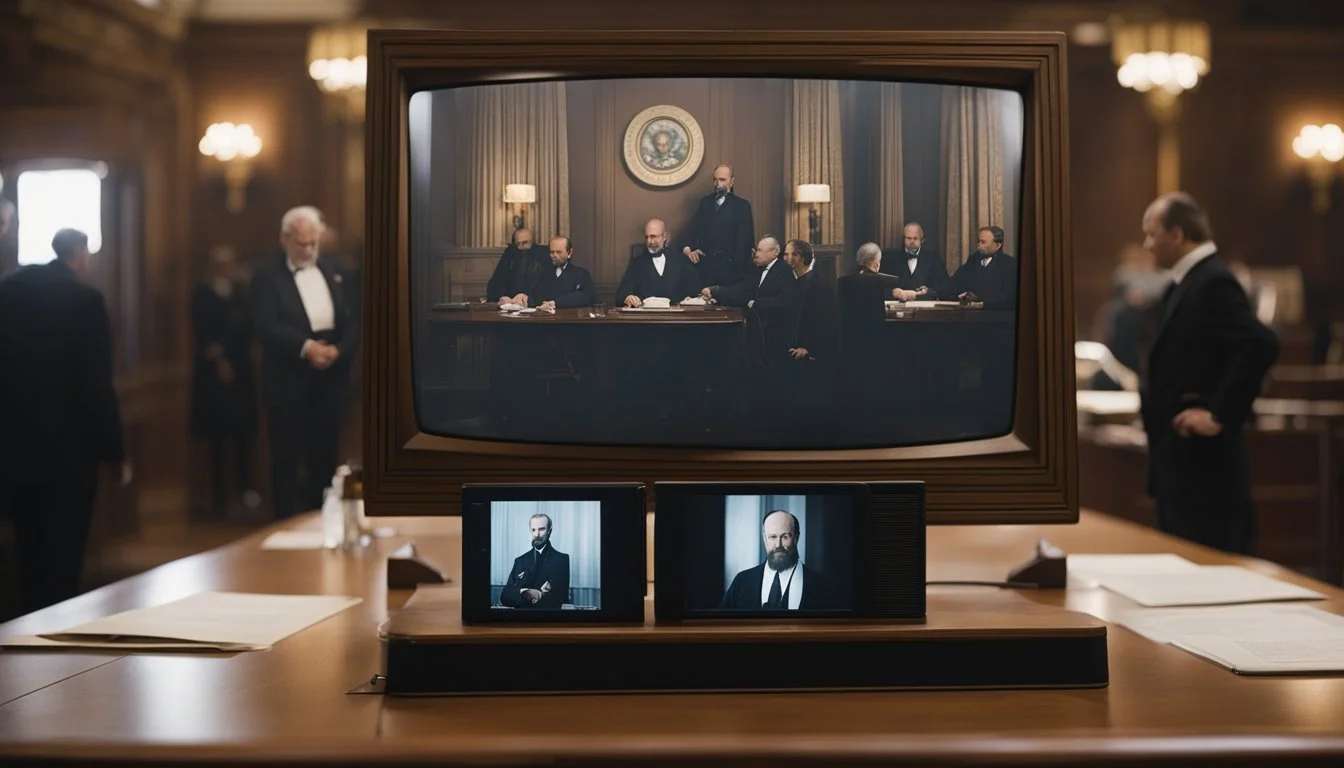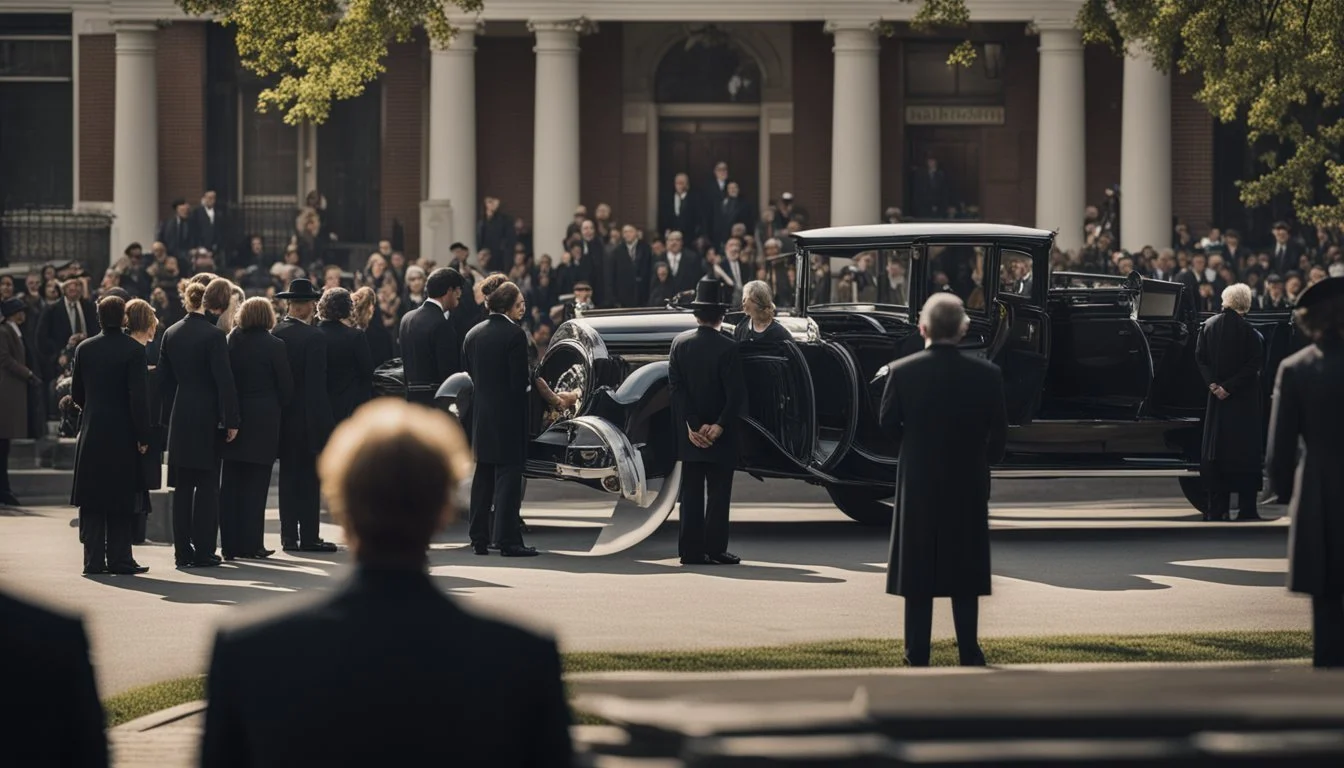2 Poignant Documentaries on James A. Garfield's Brief Presidency
Exploring a Forgotten Era in American History
James A. Garfield's presidency, though tragically brief, left an indelible mark on American history. Lasting only 200 days before his untimely assassination, Garfield's tenure as the 20th President of the United States has become a subject of fascination for historians and documentary filmmakers alike.
Two notable documentaries explore Garfield's rise to power, his short-lived presidency, and the dramatic events surrounding his assassination. These films offer viewers a unique glimpse into the life and legacy of a man whose potential as a leader was cut short, leaving many to wonder what might have been had he served a full term in office.
1) "Destiny of The Republic: A Tale of Madness, Medicine and the Murder of a President" by Candice Millard (2011)
Candice Millard's book offers a gripping account of James A. Garfield's life and untimely death. The work meticulously details Garfield's rise from poverty to the presidency, showcasing his remarkable intellect and character.
Millard's narrative skillfully weaves together the stories of Garfield, his assassin Charles Guiteau, and the medical practices of the time. She explores how the president's death was not solely due to the gunshot wound, but also the result of misguided medical interventions.
The book paints a vivid picture of 19th-century America, touching on themes of politics, science, and social change. Millard's extensive research brings to life the personalities involved in this tragic episode of American history.
"Destiny of the Republic" received critical acclaim for its engaging storytelling and historical accuracy. It provides readers with a deep understanding of Garfield's brief presidency and the circumstances surrounding his assassination.
More information on "Destiny of the Republic" by Candice Millard
2) "Murder of a President" (American Experience documentary)
"Murder of a President" is a PBS American Experience documentary that aired in 2016. It chronicles the assassination of James Garfield and the tragic final months of his life.
The film begins with a dramatic reenactment of the shooting on July 2, 1881, at a Washington D.C. railroad station. It then explores Garfield's background as a scholar, Civil War general, and reluctant presidential candidate.
Garfield's brief presidency and his efforts to reunite the nation after the Civil War are examined. The documentary also delves into the mental state of his assassin, Charles Guiteau.
The film vividly depicts Garfield's painful struggle for survival over 80 days following the shooting. It highlights the primitive medical practices of the time that likely contributed to his death.
"Murder of a President" offers a compelling look at a lesser-known chapter in American history. It sheds light on Garfield's character and the impact of his untimely death on the nation.
More information on American Experience: Murder of a President (2016)
Overview of James A. Garfield's Presidency
James A. Garfield's presidency lasted only 200 days, cut short by an assassin's bullet. Despite its brevity, his term saw efforts at civil service reform and attempts to tackle corruption.
Political Background
Garfield entered the presidency as a seasoned politician. He served nine terms in the U.S. House of Representatives before his election in 1880. As a Civil War general and Republican leader, Garfield brought military and legislative experience to the White House.
His campaign focused on civil service reform and sound money policies. Garfield's victory was narrow, winning the popular vote by just 10,000 votes out of over 9 million cast.
Major Accomplishments
Garfield's short tenure limited his achievements, but he made notable progress in certain areas:
Appointed reformers to key government positions
Launched investigations into postal service corruption
Advocated for civil rights and education for African Americans
Pushed for a more merit-based civil service system
His efforts to combat political patronage and the "spoils system" laid groundwork for the Pendleton Civil Service Reform Act, passed after his death. Garfield also successfully navigated a dispute within the Republican Party, asserting presidential authority in appointments.
Impact of Garfield's Assassination
President James A. Garfield's assassination in 1881 sent shockwaves through the nation and sparked significant changes in American politics and society. The tragedy highlighted vulnerabilities in presidential security and exposed deep flaws in the political patronage system.
Immediate Aftermath
Garfield's shooting on July 2, 1881, by Charles Guiteau stunned the country. The president lingered for 80 days before succumbing to his wounds on September 19. During this time, the nation anxiously followed news of his condition.
The assassination attempt exposed the lack of presidential protection. No formal security detail existed for the president at the time. This glaring oversight led to the creation of the Secret Service's presidential protection duties.
Garfield's death also spurred medical advances. The primitive care he received, including doctors probing his wound with unsterilized fingers, highlighted the need for improved medical practices.
Political Ramifications
The assassination had far-reaching effects on the American political system. Guiteau, the assassin, was a deranged office seeker who believed he deserved a government position for supporting Garfield's campaign.
This incident brought intense scrutiny to the "spoils system" of political patronage. Public outrage over the link between this system and the president's death galvanized support for civil service reform.
The Pendleton Civil Service Reform Act of 1883 was passed as a direct result. This landmark legislation established a merit-based system for hiring federal employees, significantly reducing political corruption and patronage.
Chester A. Arthur, Garfield's vice president, assumed the presidency and surprised many by championing civil service reform. This shift marked a turning point in American political appointments and governance.
Legacy of James A. Garfield
James A. Garfield's brief presidency left a complex and enduring impact on American history. His reforms and tragic assassination shaped both political practices and public memory in the years that followed.
Historical Significance
Garfield's tenure, though short, introduced important changes to presidential appointments. He challenged the spoils system by advocating for merit-based civil service reforms. This stance laid groundwork for the Pendleton Civil Service Reform Act, passed after his death.
Garfield's assassination highlighted the need for presidential security, leading to increased protective measures for future leaders. His death also sparked advancements in medical practices, as doctors' failed attempts to save him exposed shortcomings in contemporary medical knowledge.
The president's humble origins as a "canal boy" who rose to the nation's highest office reinforced the American ideal of upward mobility. This narrative resonated with many citizens and became a key part of his legacy.
Memorials and Tributes
Numerous memorials honor Garfield's life and service. The James A. Garfield Monument in Lake View Cemetery, Cleveland, stands as an impressive tribute. It features a 180-foot-tall tower and houses Garfield's casket.
The James A. Garfield National Historic Site in Mentor, Ohio preserves his home and campaign headquarters. This "Lawnfield" estate offers visitors insight into Garfield's personal life and political career.
Several schools, streets, and public spaces across the United States bear Garfield's name. These tributes ensure his place in public memory, despite his brief time as president. A statue of Garfield also stands on the grounds of the U.S. Capitol, commemorating his service to the nation.




